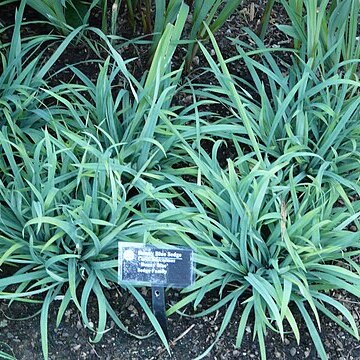Tufted; stems very weak and slender, 2–5 dm, ascending to reclining; basal sheaths white or light brown; lvs roughened on the margins and hispidulous on the veins toward the tip, those of the sterile shoots 3–10(–12) mm wide, of the fertile ones a little narrower; terminal spike staminate, 1–2 cm, on a very short to elongate (10 cm) peduncle; pistillate spikes 2–4, 0.6–2 cm, scattered, on short and erect to long (9 cm) and drooping peduncles, the lowest one basal; pistillate scales cuspidate to acute, the lowest 1 or 2(3) empty or subtending staminate fls; perigynia 4–9, 2.5–4 mm, finely many-nerved as well as 2-ribbed, elliptic-ovoid and sharply trigonous, abruptly contracted to a short, slightly oblique beak with entire orifice; achene sharply trigonous; 2n=44, 46. Moist or wet woods, especially in heavy clay soils, chiefly in calcareous districts; s. Me. to Mich., s. Wis., and s. Io., s. to N.C., n. Ga., n. Ala., and Mo.

